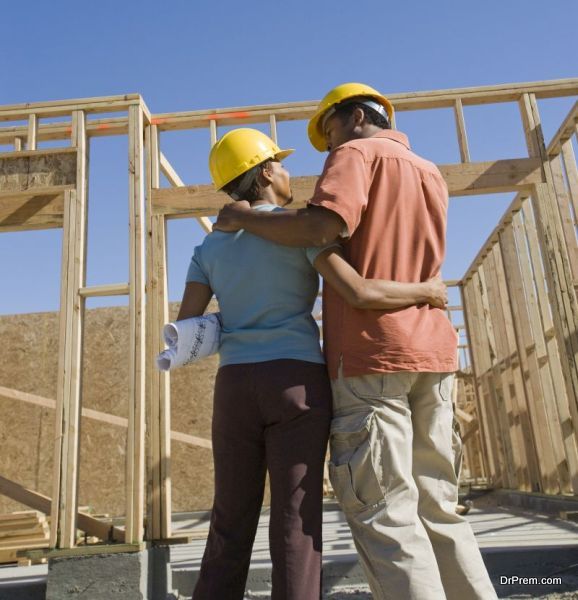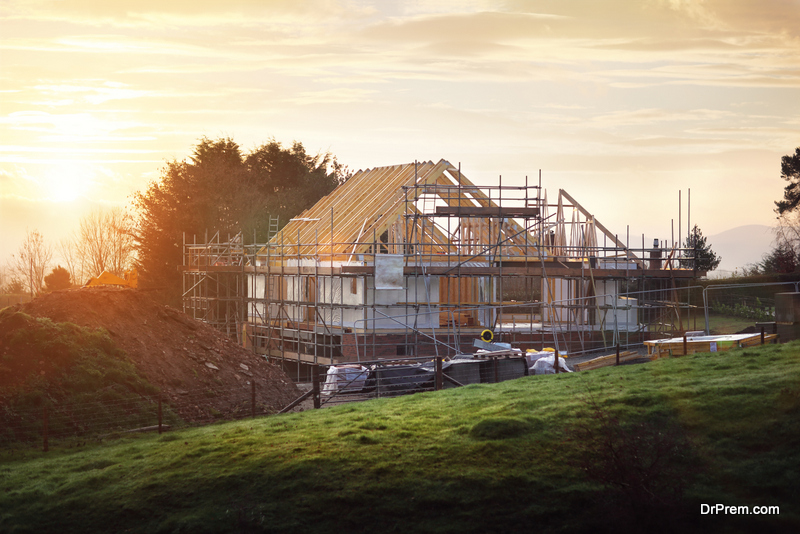One of the most exciting experiences in your life will be becoming a homeowner. It is even more exciting if you are building a home instead of purchasing one. Unfortunately, it is a downer when you need to think about the impact that constructing your home will have on the environment.
The negative environmental impact of building a home is higher than you think. On average, constructing a home in the United Kingdom will produce between 50 tons and 80 tons of carbon in the atmosphere. Of course, homes in the United States are considerably larger, so you will leave an even larger environmental footprint if you are building an average sized home there.
If you are seriously concerned about the environment, then you is going to meet you do an objective analysis of the environmental footprint of your new home. Here are some things that you’re going to need to take into consideration.
The size of your home
 The size of your home is proportional to the amount of CO2 that you will need to produce while building it. There isn’t a lot of research available on the relationship between carbon emissions and the size of the property that is being constructed. However, it appears that the correlation is exponential, not linear. This means that the environmental footprint for building a larger property is going to be a lot higher than you think. There are a number of reasons this is likely the case:
The size of your home is proportional to the amount of CO2 that you will need to produce while building it. There isn’t a lot of research available on the relationship between carbon emissions and the size of the property that is being constructed. However, it appears that the correlation is exponential, not linear. This means that the environmental footprint for building a larger property is going to be a lot higher than you think. There are a number of reasons this is likely the case:
- You are going to need to dig deeper to create a strong enough foundation for a larger building.
- Since it is going to take longer to build, the construction team is going to need to spend more days traveling to and from the job site.
- You are probably going to need to do more work to pass inspections and might be denied the first time, because there is probably going to be more issues with a larger property.
- You are probably going to need to invest in sturdier materials, which are going to be happier to left and require more energy to produce and finish.
- The base of the foundation is going to be wider, which means you need to carve into a larger share of the natural ecosystem.
If you really want to have a more environmentally friendly home, then you should consider making it smaller. This is one of the arguments in favor of tiny homes.
Look at the types of materials that you are using
 Some materials are going to have more adverse effects on the environment than others. According to Lifestyle Flooring UK, they might require more chemicals to produce and stain than the materials they sell. The effect of these is twofold. They will involve using more energy and resources to create, which hurts the environment before they are even take it off the production line. You are also going to need to need to consider the long-term effects after they are used in your property. They might bleach into the land. It might also require more maintenance and need to be replaced. This is one of the reasons it is better to use engineered wood for flooring, such as those shown on this page.
Some materials are going to have more adverse effects on the environment than others. According to Lifestyle Flooring UK, they might require more chemicals to produce and stain than the materials they sell. The effect of these is twofold. They will involve using more energy and resources to create, which hurts the environment before they are even take it off the production line. You are also going to need to need to consider the long-term effects after they are used in your property. They might bleach into the land. It might also require more maintenance and need to be replaced. This is one of the reasons it is better to use engineered wood for flooring, such as those shown on this page.
One of the best things you can do to make sure your home is good for the environment is use materials that will last as long as possible. This is important, because you won’t need to leave a larger environmental footprint by constantly using scarce resources.
You should also look for materials that are either made from renewable resources or minerals that are easy to work with. Heavier and denser types of masonry are going to require more energy to work with, which is going to leave a larger environmental footprint.
Article Submitted By Community Writer




